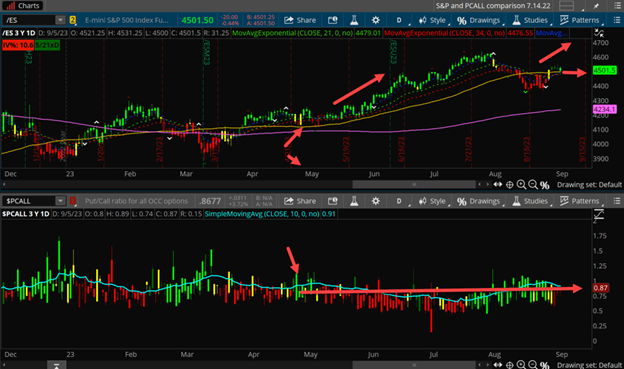September—a seasonally bearish time. Except when it’s not, says Danielle Shay of Fivestartrader.com.
The market loves nothing more than to be an equal opportunity dream killer. What does that mean? It means it crushes the dreams of longs and shorts equally, especially when the market is too long or too short. Let’s take May, for example. “Sell in May, and Go Away” is a common Wall Street saying. And, with the bear market’s ferocity, many traders were salivating over getting short during this seasonally bearish time. But what happened?
The Put/Call Ratio
Check out the screenshot of the put/call ratio compared to the S&P futures on a daily chart.

The put/call ratio was extended, up above .87, which is also where it is now. Admittedly, the average was a bit higher in May. Still, it is very similar to the level it hit at the end of August.
In May, the S&P pulled back into the 50 SMA in a daily squeeze before it took off, causing short-covering as the indexes traded higher. This time, the S&P is in a daily squeeze as well. And, instead of pulling back to sit on the 50 SMA, the index fell below this critical support zone and then broke above it. Oftentimes, when this happens, it creates a slingshot move, in which the market flings higher just when it appears as though it is going to fall apart.
Learn more about Danielle Shay at Fivestartrader.com.

















